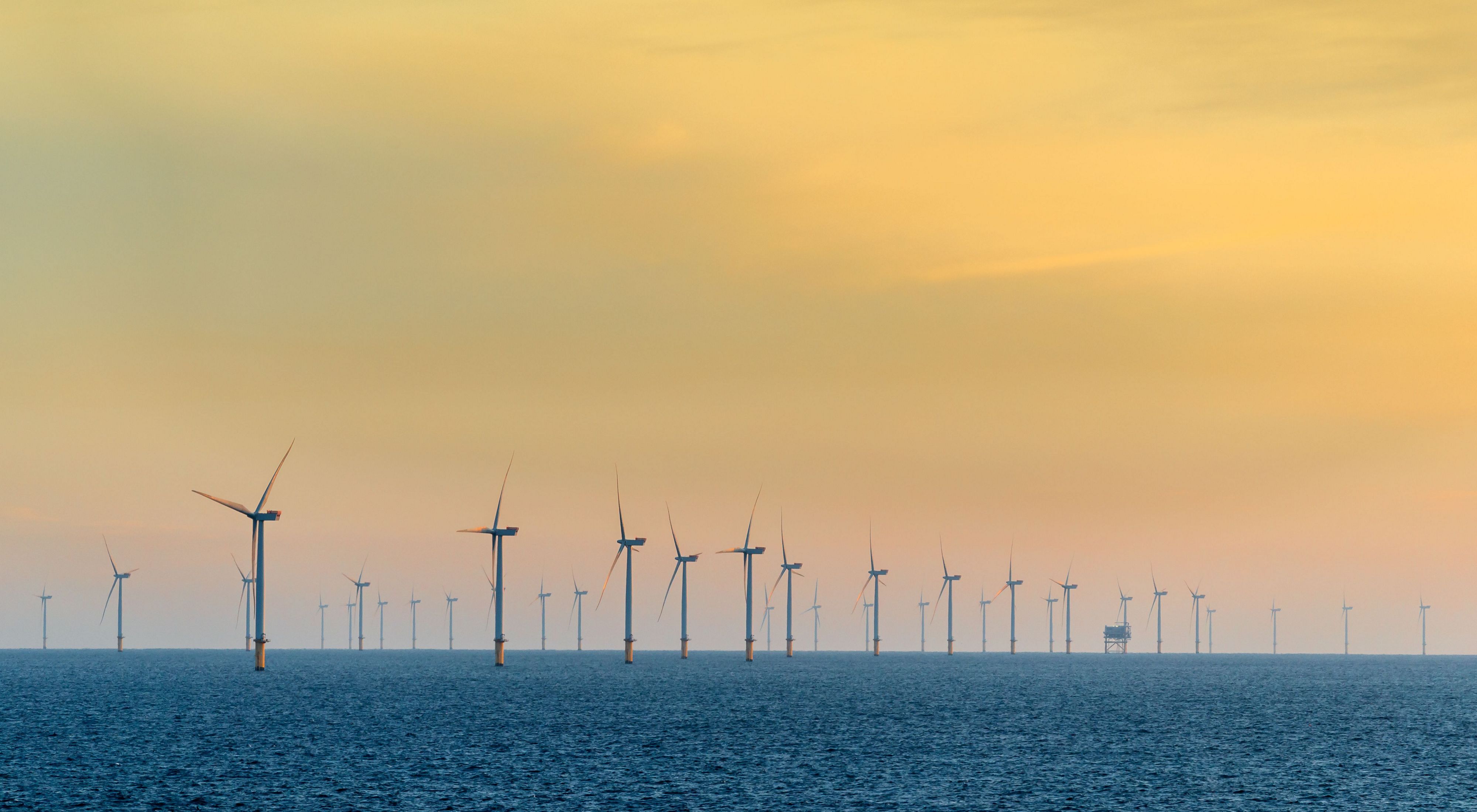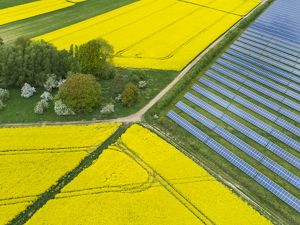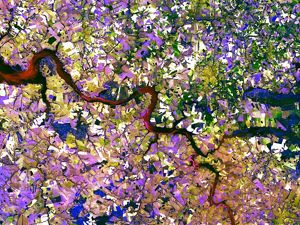Six Pathways to a Clean and Green Renewable Energy Buildout
Accelerating clean energy development is critical—here’s how we do it the right way.
We are at the beginning of an enormous global buildout of clean energy infrastructure. This is good news for climate mitigation—we need at least a nine-fold increase in renewable energy production to meet the Paris Agreement goals. But this buildout must be done fast and smart.
Renewable energy infrastructure requires a lot of land—especially onshore wind and large-scale solar installations, which we will need to meet our ambitious climate goals. Siting renewable energy in areas that support wildlife habitat not only harms nature but also increases the potential for project conflicts that could slow the buildout—a prospect we cannot afford. Building renewables on natural lands can also undermine climate progress by converting forests and other areas that store carbon and serve as natural climate solutions.
Get the Report
Clean and Green Pathways for the Global Renewable Energy Buildout
Download to Read MoreFortunately, there is plenty of previously developed land that can be used to meet our clean energy needs—at least 17 times the amount of land needed to meet the Paris Agreement goals. But accelerating the buildout on these lands requires taking pro-active measures now.
Clean & Green: Pathways for Promoting Renewable Energy, a new report from The Nature Conservancy (TNC), is a call to action that highlights six ways for governments, corporations and lenders to promote a clean and green renewable energy buildout.
1. Get in the Zone: Identify areas where renewable energy buildout can be accelerated
Establishing renewable energy zones based on both energy development potential and environmental considerations can steer projects away from natural lands and support faster project approval—it’s a win-win for people and nature.
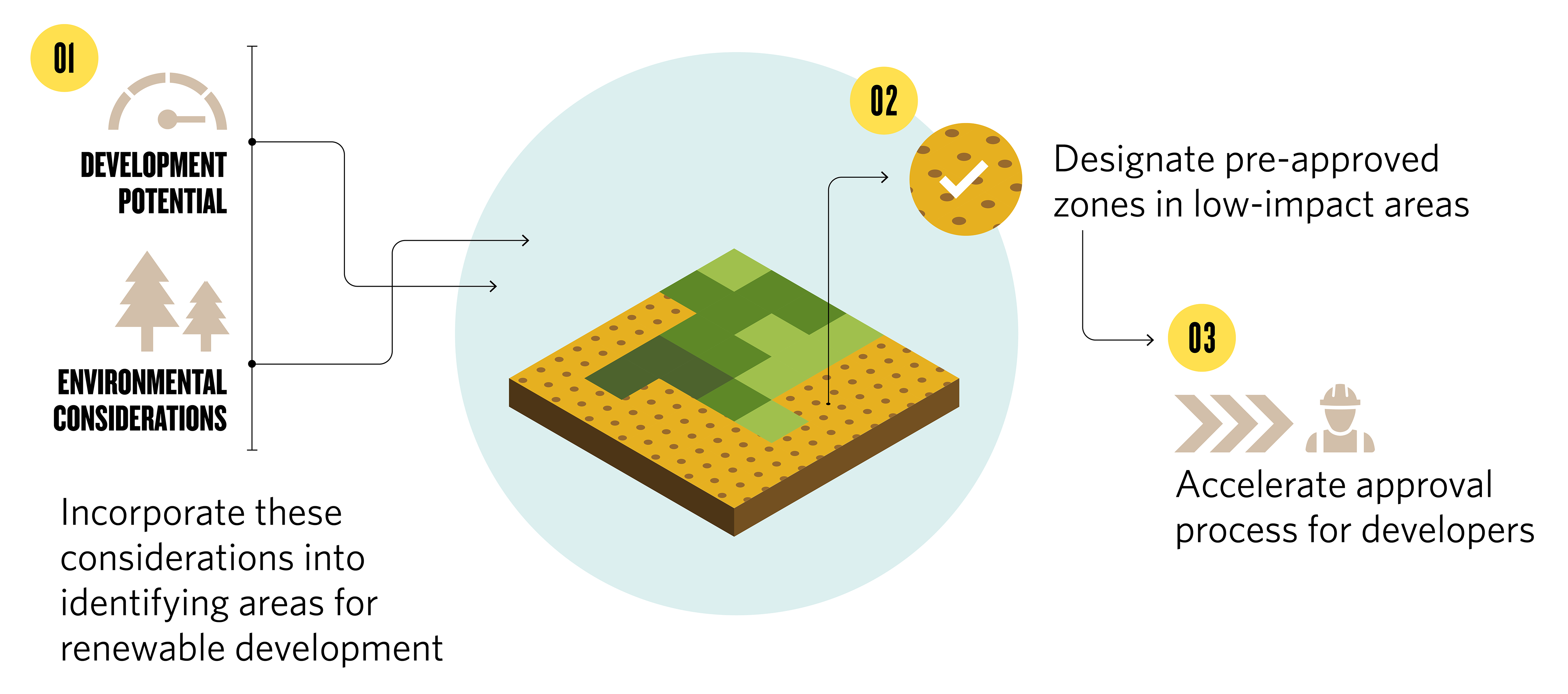
Learn More: TNC supports the identification of renewable energy development areas on U.S. federal lands and in New York state where development has community support and will have low impact on nature.
2. Plan Ahead: Consider habitat and species in long-term energy planning and purchasing processes
Governments and utilities make long-term plans to guide how they will meet energy demand and climate goals. They also establish purchasing processes for securing new renewable energy generation and transmission. When nature is considered in this planning and purchasing, renewable energy development can be directed to places that are good for projects and low impact for wildlife and habitat.
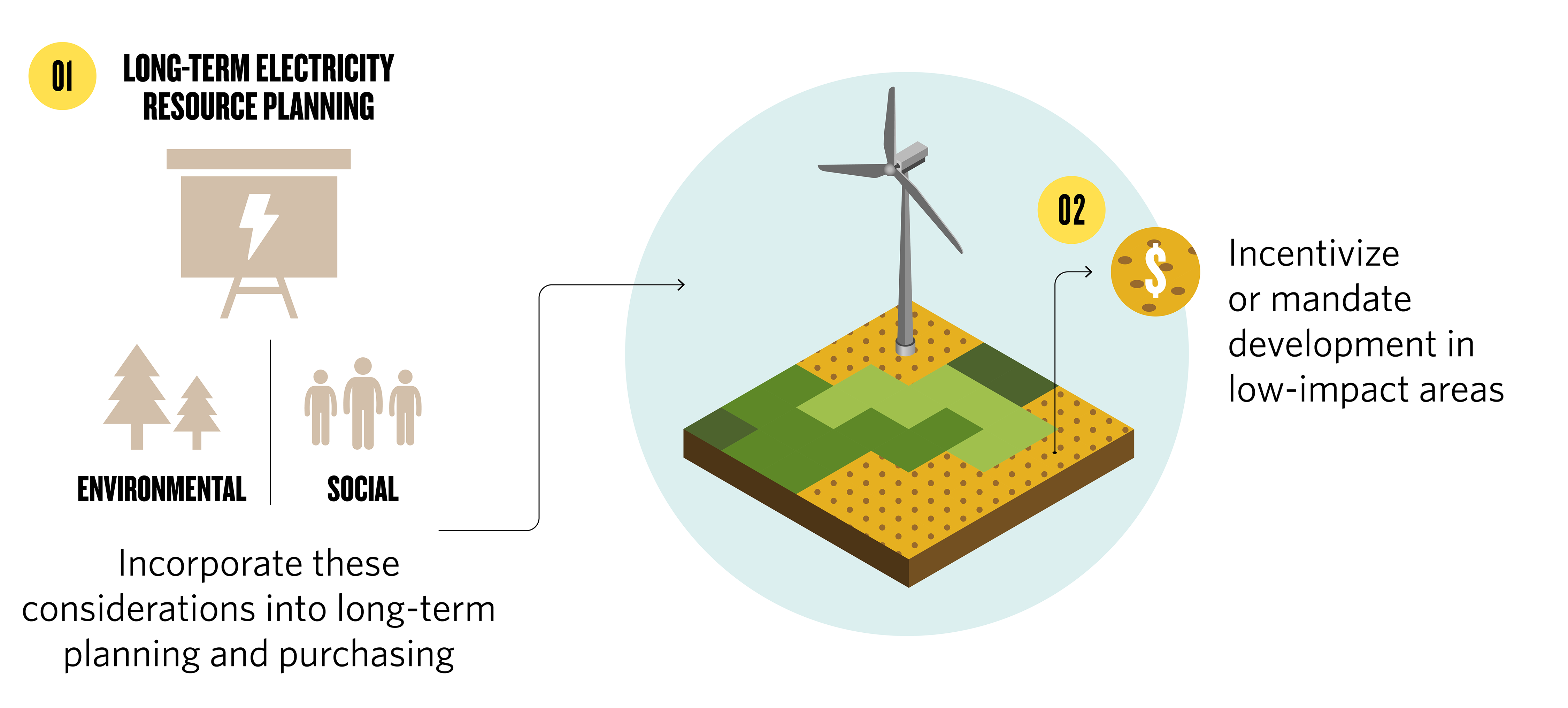
Learn More: TNC’s Power of Place project in the U.S. and renewable energy planning initiative in India are demonstrating how to integrate nature into energy planning processes.
3. Site Renewables Right: Develop science-based guidelines for low-impact siting
Siting guidelines help developers evaluate potential impacts to natural habitat and steer projects to low-impact areas. Such guidelines are even more effective when regulators and lenders set clear standards and expectations for their implementation.
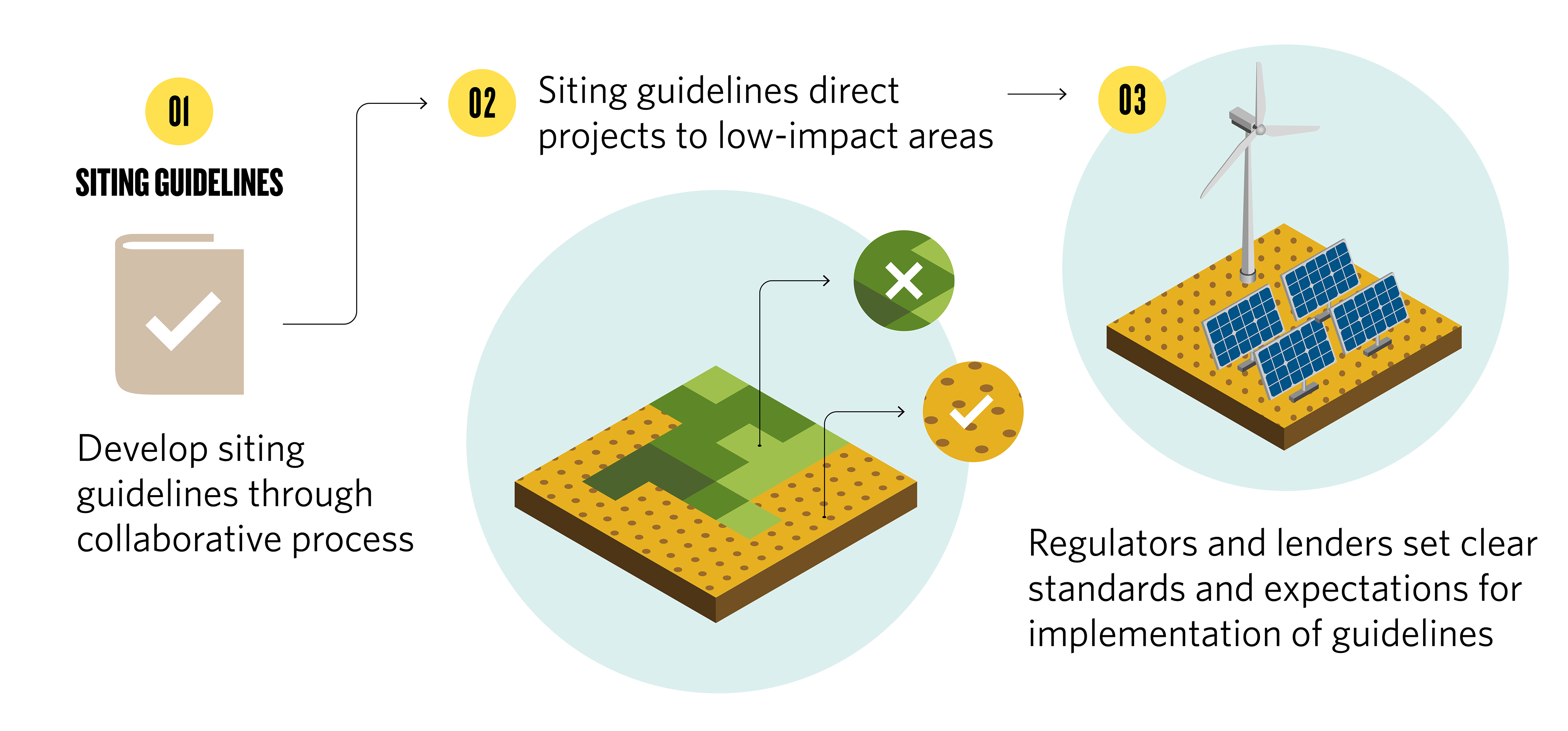
Learn More: TNC’s Site Wind Right supports the U.S. Fish and Wildlife Service’s Wind Energy Guidelines by showing the ample opportunities for developing wind resources in the Great Plains while minimizing impacts to grasslands habitat.
Our global insights, straight to your inbox
Get our latest research, insights and solutions to today’s sustainability challenges.
Sign Up4. Choose Brownfields Over Greenfields: Facilitate development on former mine lands and industrial sites
Using former mines, brownfields and other industrial sites for renewable energy development can turn unproductive lands into assets, create jobs and tax revenue for local economies, and support goals for climate and nature. These sites can be ideal for renewable energy projects, as they often have existing transmission infrastructure and enjoy strong local support for redevelopment. It’s an approach that benefits communities, climate and conservation.

Learn More: TNC’s Mining the Sun work in Nevada and West Virginia demonstrates that developing solar on former mining lands can support renewable energy and local redevelopment goals.
5. Buy Renewables Right: Make corporate commitments to buy low-impact renewable energy to meet clean energy goals
Corporate sourcing of renewable energy is growing rapidly around the world. When companies buy renewable energy from projects that avoid impacts to wildlife and habitat, they can support their sustainability goals for climate and nature.
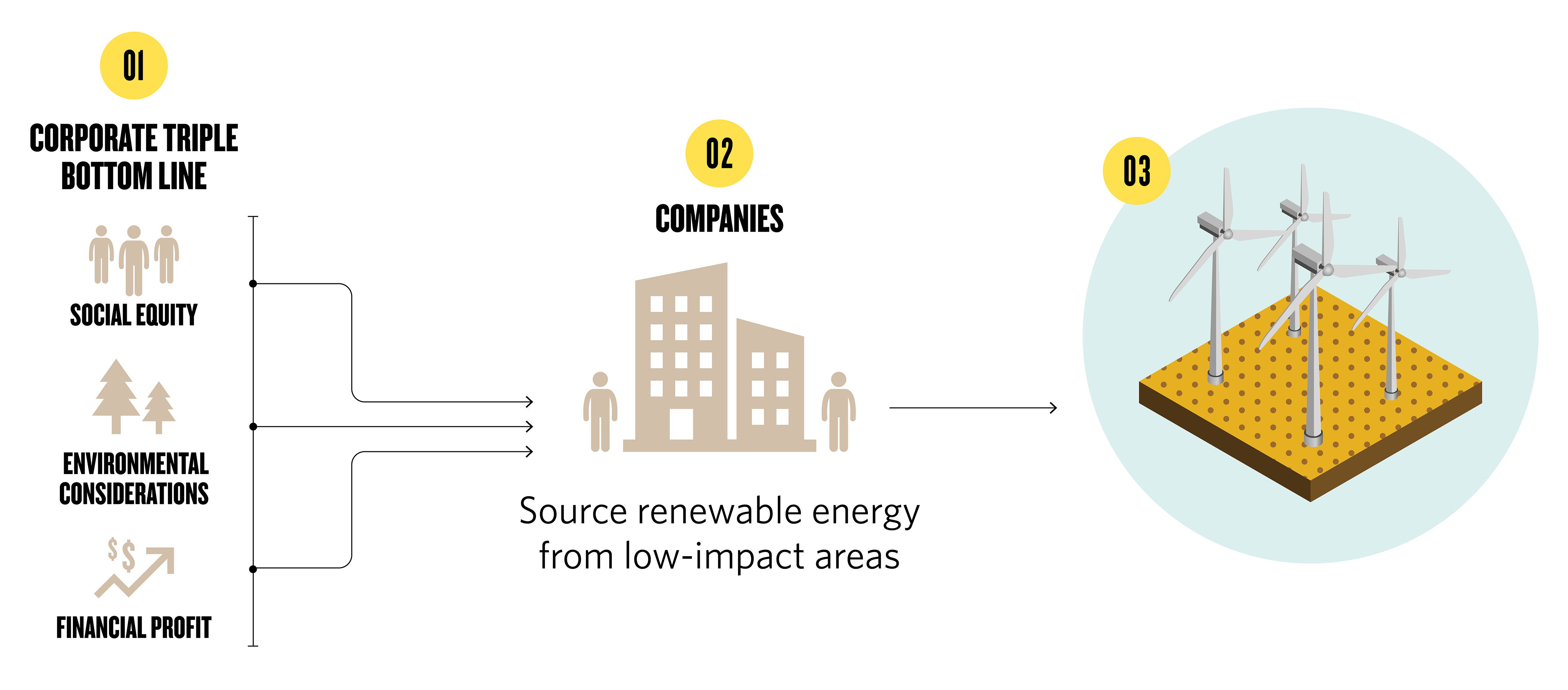
Learn More: TNC works with corporate members of the Renewable Energy Business Alliance to integrate low-impact siting considerations into procurement processes.
6. Invest for Climate and Nature: Apply lending performance standards to ensure renewable energy investments are clean and green
Financial institutions influence renewable energy siting through their environmental and social performance standards, due diligence processes, and technical assistance, all of which can require or incentivize developers to locate projects in low-impact areas.
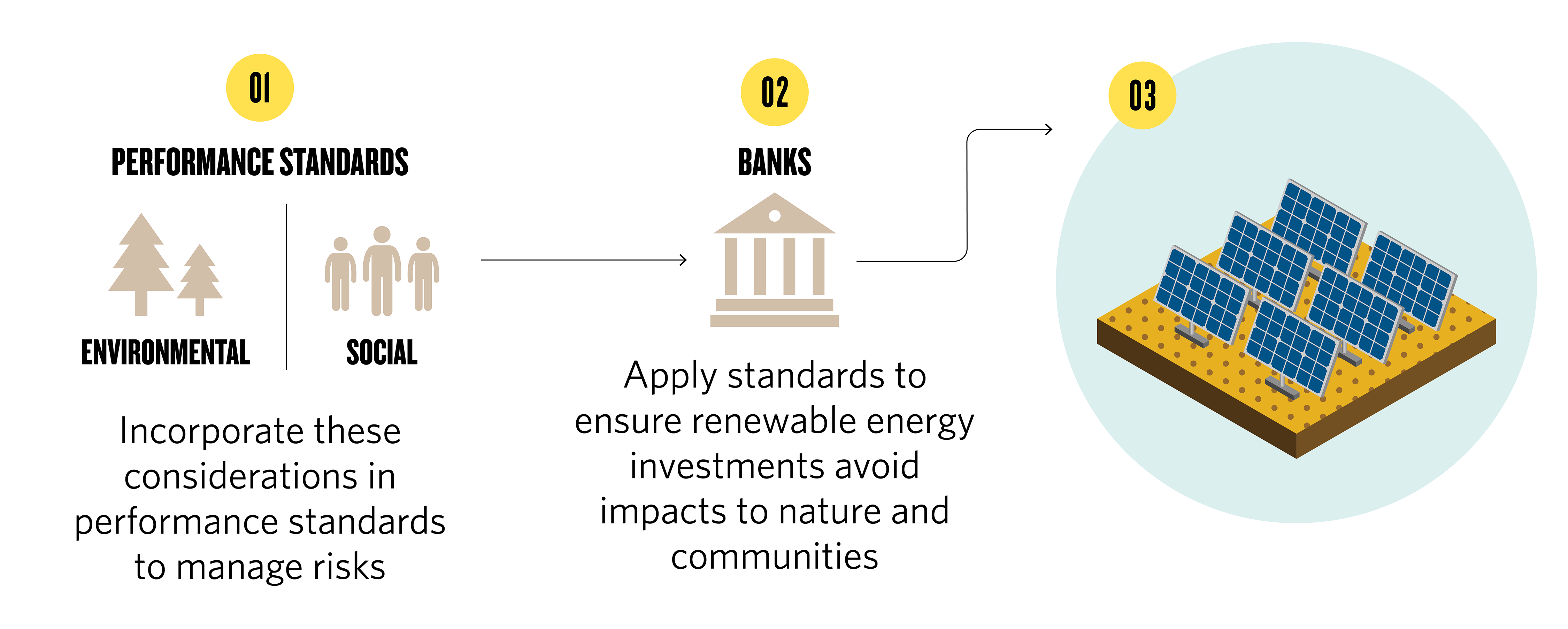
Learn More: TNC works to strengthen the lending performance standards of multilateral development banks and private financial institutions.
Resources
-
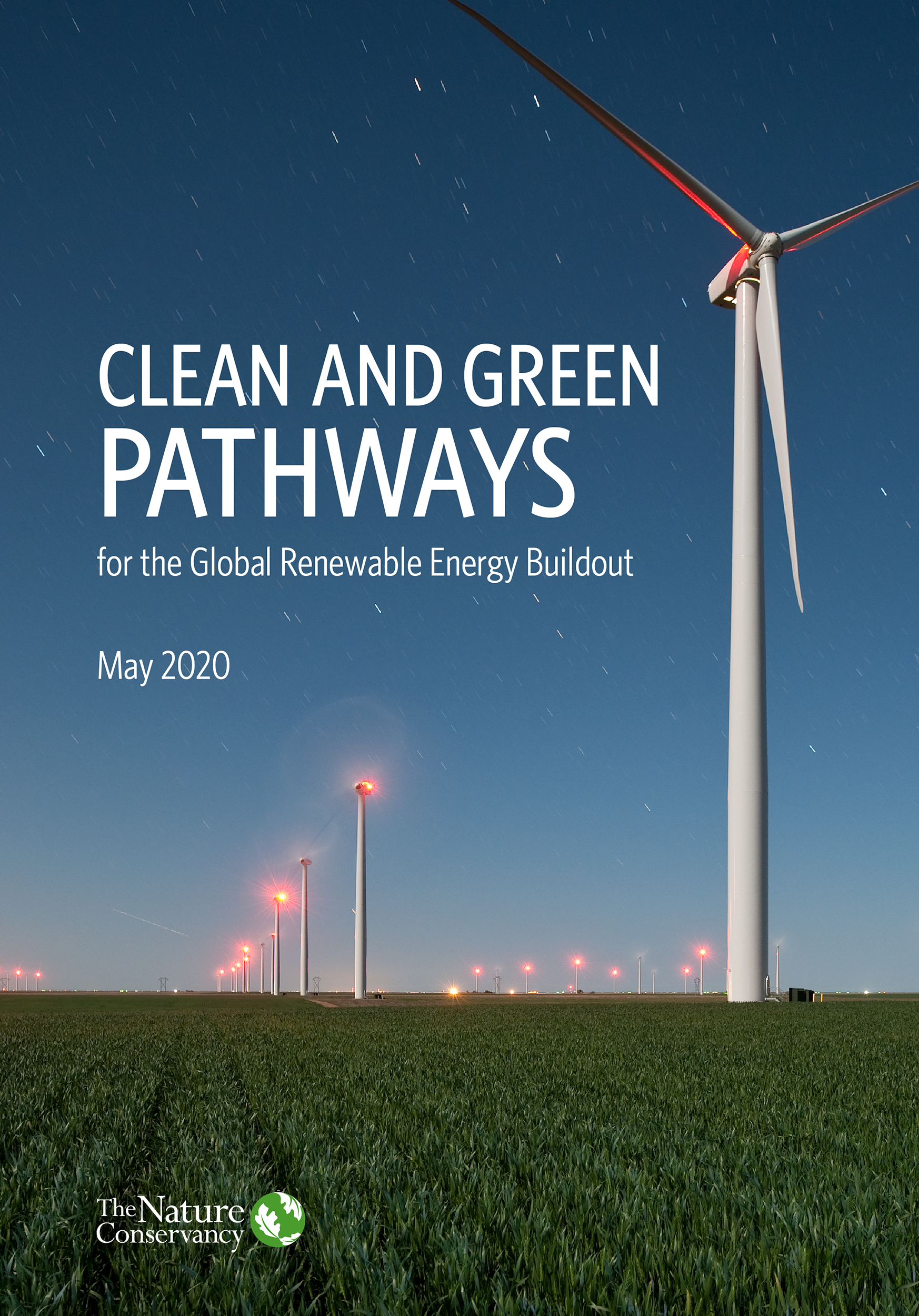
Full Report: Clean and Green Pathways
May 2020
The Nature Conservancy describes six critical ways to help governments, corporations and lenders accelerate our clean energy buildout while preserving natural lands, increasing local benefits for communities, and reducing wildlife impacts.
DOWNLOAD -
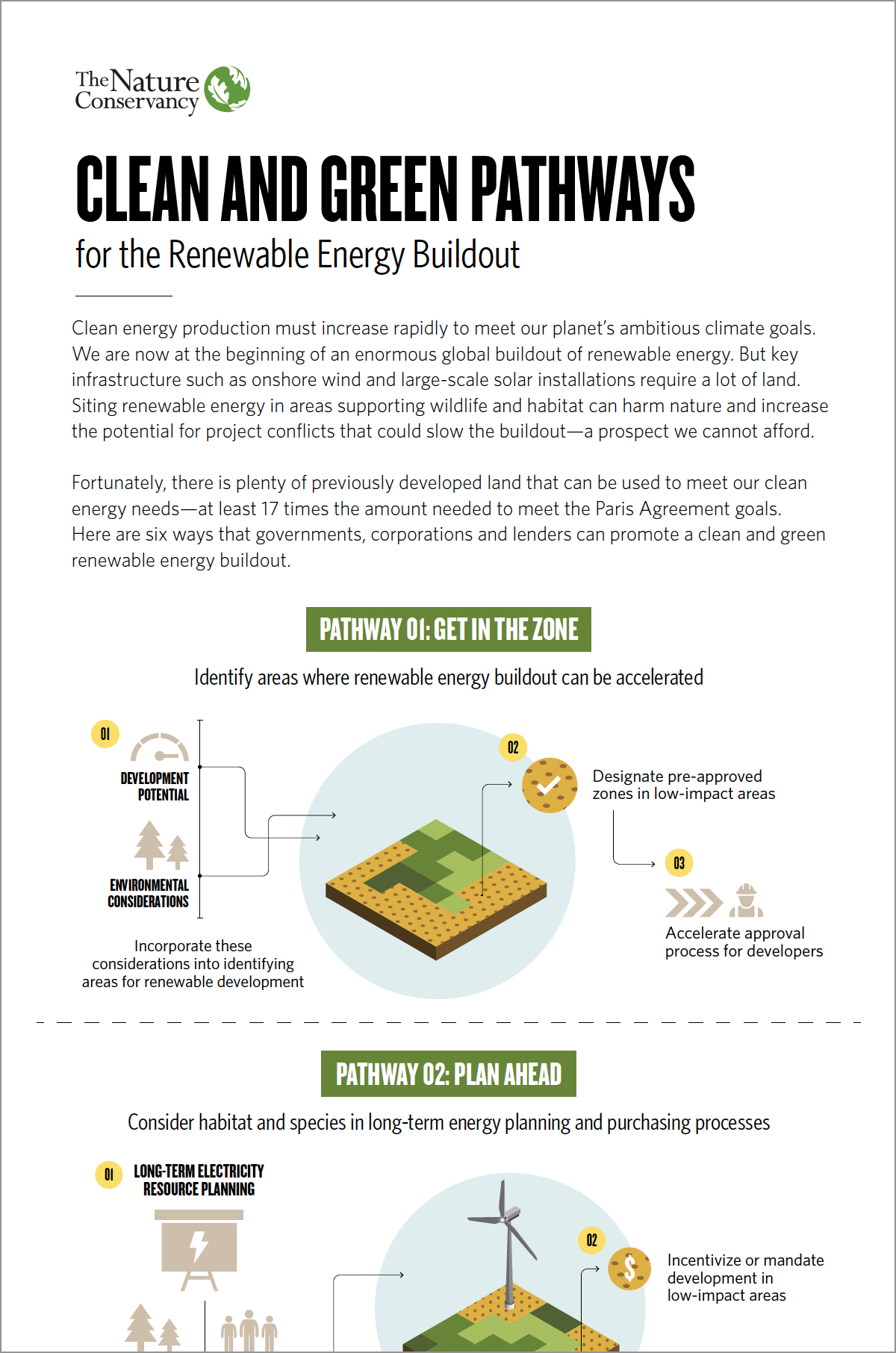
Infographic: Six Pathways
PDF
This graphic lays out six pathways that governments, corporations and lenders can use to promote a clean and green renewable energy buildout.
DOWNLOAD
Global Insights
Check out our latest thinking and real-world solutions to some of the most complex challenges facing people and the planet today.
